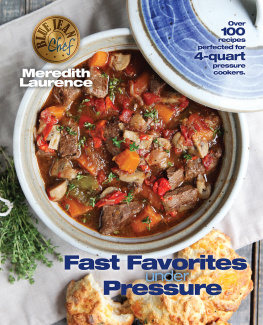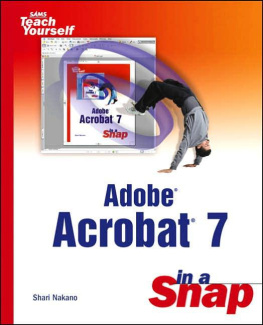G. Robertson
FORWARD
Some things never change.
We live in a highly sophisticated, super-tech, Twenty-First Century World a world in which nearly everything old simply loses relevance and gets banished to history, or finds a different kind of value in being nostalgic.
Even in the locksmithing industry, recent technological advances have taken over certain segments. The high security segment, in particular. More and more, government, military and highly competitive industry is replacing old-fashioned pin tumbler lock security with devices that twenty years ago would have been commonplace only in science fiction/fantasy stories.
Retina scan lock technology; fingerprint scanners; card readers (which by now are already heading for the has-been pile) all these are slowly taking their place at the very top of the tech pyramid.
Yet, strangely enough, there are very few locksmithing skills or procedures that have gone into retirement. Locksmiths still pick locks the same way they did ages ago because the basic lock design that used in the majority of homes and buildings even to this day has not changed. Locksmiths still cut keys with machines that, while having been modernized over the years, still use electric motors and simple mechanical devices. A good many practicing locksmiths still rely heavily on the sale and installation of pin tumbler lock hardware (and even fairly low tech wafer locks), and they do a vigorous business selling pin tumbler padlocks.
Okay, some old time processes are pretty much a thing of the past. Way back when, before the advent of pin tumbler locks as we know them, warded locksets ruled. They were the high tech locks before Linus Yale, Sr. and his son (Jr.) improved upon an ancient Egyptian design to give us the modern pin tumbler lock. That was a different era in which locksmiths had to be blacksmiths, too, because they created both lock and key from raw stock mostly by hand. I wouldnt be surprised if there were a few craftsmen out there that still keep that tradition alive, but if they do, it is not because there is still a demand for it.
Modern (a word that is so relative to the times it is mostly useless) modern locks use flat brass or nickel plated brass keys and these lend themselves well to the art of impressioning.
This does not include pin tumbler or wafer cylinders that take advantage of more recent innovations, resulting in what we call pick resistant or bump proof locks. While it may not be impossible to do so, the process of conventional key impressioning is not a good fit to make keys for these more advanced designs.
I would almost be willing to bet that leaves at least 99% of the remaining locks in this world as good candidates for key impressioning. Not too bad.
FAST TRACK NAVIGATION (TABLE OF CONTENTS)
Impressioning: What Is It?
There are numerous ways to create a working key for a lock. Obviously, if you already know the combination (the specific key cuts needed to operate the lock) the most direct method is to cut the key accordingly using either a code cutting machine or a manual code punch machine. A second option, in the absence of code cutting equipment, would be to disassemble the lock, if possible, and decode the existing combination or dump the pins or wafers and start fresh. There are scenarios in which you will not have this option. If you are dealing with a lockout situation, where you have no way to take the lock apart without destroying or damaging it, disassembly is not possible.
You may be able to pick the lock, or use bump keys, to open the door and then deal with creating a key by disassembly. But what if the lock resists picking or bumping for whatever reason? This can happen even to seasoned locksmiths who are very adept at lock picking.
There are, in fact, a great many practitioners who prefer to use impressioning rather than disassemble and decode even if they have that option open to them. These are generally locksmiths who like to keep one foot firmly in the Traditional men and women who enjoy using a skilled and honored approach and who frankly like the challenge.
In a nutshell, impressioning is a method of originating a working key for a lock in which you begin with a prepared key blank and end up with an approximated but workable key. I say approximated because a file is used in creating the key (normally, but not always) so the actual cuts will not be perfectly formed, nor will it be perfect in terms of its cut depths. But the key will turn the lock without damage, and it can be used to determine the exact factory depths so a proper, machine-made key can then be created, if desired. In most cases the impressioned key is perfectly suitable for use as is.
During my long career as a Professional Locksmith I most often used my HPC code cutting machine, which was part of my service vehicle setup, to actually create each incremental cut while impressioning, rather than use a file. This way, I ended up with a perfectly cut key. The procedure worked well if I could park my service van within a reasonable walking distance of the lock to be serviced. I would get my marks on the key blank, walk to the van, cut down each position that had marks exactly one increment (the actual depth determined by the lock brand or keyway), and repeat. It worked wonderfully for those older Ford vehicles that used pin tumbler ignition and door locks, but the days of being able to impression vehicle locks are mostly in the past.
The key blank is the first thing to consider. First off, it is a good idea to explain what a key blank is for those of you who may be new to this subject. You see them hanging by the dozens in hardware stores at the counter where key duplication is offered, and of course every locksmith shop in the world has walls literally bristling with them.
A key blank is simply an un-cut key, of the proper shape and length for the particular lock in which it will end up working. The blade of a key blank has no cuts on it at all it is flat. There are literally thousands different key profiles, a name locksmiths use to identify specific types of key blanks. Id say only 5 or 6 of these profiles will ever be useful to you unless you enter the industry as a pro and begin dealing with commercial lock hardware. Even then, youll likely deal with no more than a dozen or so. Many of the other key profiles are relevant only to master keyed systems and youll almost certainly never have to try and impression with them.
The most common household key profiles include:
Kwikset
Schlage
Yale (original keyway)
Weiser
Master Padlock
In addition to the above pin tumbler lock profiles, we will be dealing with one wafer style lock that used to be commonly found on desk drawers. It is a low-to-medium security key profile and it is still available in most hardware stores as a general purpose drawer lock. It typically uses one of two common blanks, both of which are strictly for locks that have wafer tumblers: B1 or Y11. I will explain the difference between pin tumbler and wafer tumbler locks further on.
A good many household locks with various brand names are using the Kwikset keyway as this has become the most often used keyway in this country. Schlage is also a keyway found on a good many minor brands. You should have a dozen or so (minimum) of each of these key blanks with you if you are called to impression a lock so you can try each one in the lock to determine the proper blank to start with. After a very short while youll be able to identify the proper blank just by looking at the shape of the keyway in the lock.








